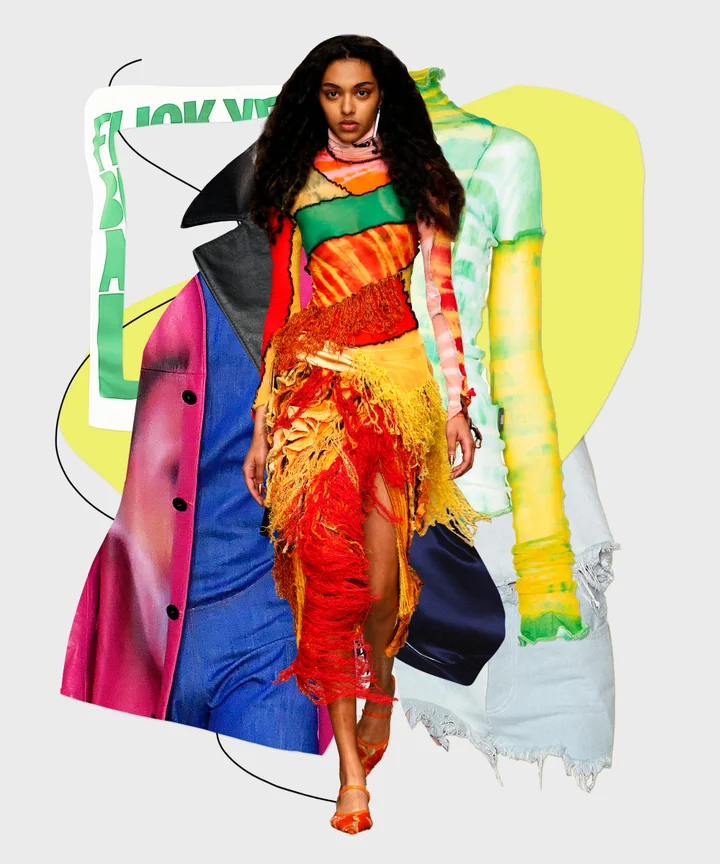Discover Standard and Modern Eastern Wear Pakistan Collections Online
Discover Standard and Modern Eastern Wear Pakistan Collections Online
Blog Article
Experience the Style of Standard Eastern Attire
Start a journey through the elaborate world of conventional Eastern clothing, where each garment narrates woven with social splendor and historic significance. From the dynamic hues of a Chinese qipao to the regal elegance of a Pakistani shalwar kameez, these garments supply a look into a world where workmanship satisfies creativity. The fusion of luxurious textiles and delicate embroidery methods produces a tapestry of beauty that goes beyond boundaries and time. Join us as we unravel the tricks behind these beautiful items and discover the appeal of Eastern clothing that has actually captivated generations.
History of Eastern Clothing
Eastern clothing has an abundant history that dates back centuries, reflecting the diverse societies and practices of regions such as Asia and the Center East. In Asia, standard clothing varies greatly from the vivid saris used in India to the classy robe of Japan.
Throughout background, Eastern outfit has not just offered as a type of clothing yet also as a sign of social identity and heritage. Today, Eastern attire proceeds to develop, blending typical aspects with modern-day fashion patterns to develop timeless and distinct styles.
Relevance of Needlework
Needlework plays a vital role in typical Eastern clothing, adding elaborate information and social significance to garments that have been passed down through generations. In Eastern cultures, needlework is not simply ornamental yet holds deep symbolic definitions. Each stitch and pattern can communicate tales, ideas, and even social status.
The art of embroidery in traditional Eastern outfit is a labor-intensive process that requires skill and patience. Highly skilled craftsmens diligently hand embroider detailed layouts onto fabrics making use of strategies that have been improved over centuries. These embroidered styles commonly mirror the rich cultural heritage of the region they stem from, showcasing concepts influenced by nature, folklore, or historical events.

Luxurious Fabrics Made Use Of
Luxurious textiles play a critical function in boosting the style and luxury of conventional attire throughout diverse Eastern societies. Silk, renowned for its soft qualities and luster, is a preferred option for many standard garments as a result of its elegant feeling and ability to drape gracefully. In countries like India, China, and Japan, silk has a long background of being made use of in standard attire, symbolizing wide range and condition.
An additional commonly utilized lavish material is brocade, identified by intricate patterns woven into the product. Brocade includes a touch of sophistication to garments and is usually seen in ritualistic outfits and official wear. Velvet, with its deluxe texture and abundant look, is likewise a preferred selection for typical attire in Eastern societies, especially for special events and article cheery events.
In addition, organza, chiffon, and satin are regularly utilized for their running and lightweight high qualities, adding a feeling of delicacy and beauty to garments. These luxurious fabrics not only elevate the visual charm of conventional Eastern clothes however additionally add to the overall attraction and appeal of the user.
Workmanship Techniques
Standard attire in various cultures showcases remarkable craftsmanship techniques that are given via generations, highlighting the skill and virtuosity associated with creating these elegant garments. Each stitch, embellishment, and needlework is thoroughly crafted to create ageless pieces that personify the social heritage and practices of the region. The craftsmanship strategies utilized in conventional Eastern attire usually entail elaborate handwork, such as hand weaving, hand needlework, and hand beading, which call for accuracy and interest to information.
Artisans who specialize in these methods undertake years of training to best their abilities and understand the traditional methods of garment building. Making look at this site use of top quality materials integrated with professional craftsmanship leads to garments that not just look aesthetically stunning however likewise stand the test of time. The commitment to protecting these workmanship techniques guarantees that each piece of typical Eastern clothes is a masterpiece, showing the abundant social history and heritage of the area.
Ageless Beauty and Charm

The elaborate needlework, fragile beadwork, and extravagant textiles used in typical Eastern attire add to its unrivaled charm. The precise handiwork gave with generations ensures that every item narrates and exhibits elegance and elegance.
Moreover, the traditional silhouettes and graceful draping of standard Eastern attire contribute to its long-lasting beauty. The streaming lines and sophisticated styles produce a sense of consistency and balance that is both visually attractive and mentally exciting.
Basically, the ageless elegance and elegance of standard Eastern attire offer as a testimony to the ability and virtuosity of the craftsmen who devote their lives to protecting these charming sartorial practices. - eastern wear pakistan
Final Thought
In verdict, the beauty of conventional Eastern home outfit is a testimony to the rich background, social relevance, and intricate workmanship of the region. From the intricate embroidery to the lavish fabrics and classic beauty, each garment informs a story and mirrors the cultural identity of its origins. Accepting Eastern clothing allows one to appreciate the creativity and style that have actually been given via generations, creating genuinely beautiful and fascinating items.
Embark on a trip via the complex globe of typical Eastern clothes, where each garment tells a story woven with cultural splendor and historical significance.Needlework plays an essential role in traditional Eastern clothing, adding elaborate details and cultural importance to garments that have been passed down via generations.Lavish fabrics play a crucial duty in improving the style and opulence of traditional attire across varied Eastern societies. The craftsmanship techniques made use of in typical Eastern clothing usually involve complex handwork, such as hand weaving, hand needlework, and hand beading, which call for precision and attention to information.
In conclusion, the beauty of standard Eastern attire is a testimony to the rich history, social relevance, and detailed workmanship of the region.
Report this page